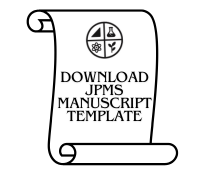Karakteristik Butir Tes Pengantar Statistika Sosial Berdasarkan Teori Respon Butir
DOI:
https://doi.org/10.21831/jpms.v6i2.23959Keywords:
Analisis karakteristik butir, teori respon butir, model 3 parameter logistik.Abstract
Analisis karakteristik butir tes dilakukan untuk menghasilkan buti-butir tes yang berkualitas (terstandar). Analisis karakteristik butir tes dapat dilakukan menggunakan pendekatan klasik maupun pendekatan modern (Teori Respon Butir). Penelitian ini bertujuan untuk mendeskripsikan karakteristik butir tes pengantar statistika sosial yang dikembangkan oleh Universitas Terbuka menggunakan pendekatan teori respon butir. Penelitian ini merupakan penelitian deskriptif eksploratif menggunakan pendekatan kuantitatif. Pengumpulan data dilakukan melalui dokumentasi 269 butir tes Pengantar Statistik Sosial dan respon 82966 mahasiswa UT yang mengerjakan tes tersebut. Analisis karakteristik butir dilakukan melalui tahapan organisasi data, uji asumsi, uji kecocokan model, estimasi parameter butir. Estimasi parameter dilakukan menggunakan bantuan software Bilog MG. Hasil analisis kecocokan model menunjukkan bahwa tes cocok diestimasi menggunakan model 3 Parameter Logistik (3 PL). Hasil estimasi parameter butir menunjukkan bahwa dari 269 butir hanya terdapat 81 butir yang memiliki kualitas baik dengan rerata indeks kesukaran (b) yaitu 2,149 dengan standar deviasi 2,451; rerata daya pembeda (a) yaitu 0,852 dengan standar deviasi 0,491; dan rerata tebakan semu (c) yaitu 0,288 dengan standar deviasi 0,093.
Kata kunci: Analisis karakteristik butir, teori respon butir, model 3 parameter logistik.
References
Adedoyin, O. O., & Mokobi, T. (2013). Using IRT psychometric analysis in examining the quality of junior certificate mathematics multiple choice examination test items. International Journal of Asian Social Science, 3(4), 992-1011.
Adegoke, B. A. (2013). Comparison of item statistics of physics achievement test using calssical test and item response theory frameworks. Journal of Eduction and Practice, 4(22), 87-96.
Al-Khader, M. M. A., & Albursan, I. S. (2017). Accuracy of measurement in the classical and the modern test theory: An empirical study on a children intelligence test. International Journal of Psychological Studies, 9(1), 71-80.
Amelia, R. N., & Kriswantoro, K. (2017). Implementasi item response theory sebagai basis analisis kualitas butir soal dan kemampuan kimia siswa Kota Yogyakarta. JKPK (Jurnal Kimia dan Pendidikan Kimia, 2(1), 1-12.
Ayanwale, M. A., Adeleke, J. O., & Mamadelo, T. I. (2018). An assessment of item statistics estimates of basic education certificate examination through classical test theory and item response theory approach. International Journal of Educational Research Review, 3(4), 55-67.
Baker, F. B. (2001). The basics of item response theory (2nd ed.). College Park, MD: ERIC Clearinghouse on Assessment and Evaluation.
Eleje, L. I., Onah, F. E., & Abanobi, C. C. (2018). Comparative study of classical test theory and item response theory using diagnostic quantitative economics skill test item analysis results. European Journal of Educational & Social Sciences, 3(1), 71-89.
Gronlund, N. E. (1998). Assessment of students achievement (6th ed.). Boston, MA: Allyn and Bacon.
Hambleton, R. K., Swaminathan, H., & Rogers, H. J. (1991). Fundamental of item response theory. Newbury Park, CA: Sage Publication.
Kartowagiran, B., Munadi, S., Retnawati, H., & Apino, E. (2018). The equating battery test packages of mathematics national examination 2013-2016. SHS Web of Conference, 42, 1-6. doi: 10.1051/shsconf/20184200022
Popham, W. J. (2009). Instruction that measures up: Successful teaching in the age of accountability. Alexandria, VA: ASCD.
Quaigrain, K., & Arhin, A. K. (2017). Using reliability and item analysis to evaluate a teacher-developed test in educational measurement and evaluation. Cogent Education, 4. 1-11. doi:10.1080/2331186X.2017.1301013
Ratnaningsih, D. J., & Isfarudi, I. (2013). Analisis butir tes objektif ujian akhir semester mahasiswa Universitas Terbuka berdasarkan teori tes modern. Jurnal Pendidikan Terbuka dan Jarak Jauh, 14(2), 98-109.
Retnawati, H. (2014). Teori respon butir dan penerapannya: Untuk peneliti, praktisi pengukuran dan pengujian, mahasiswa pascasarjana. Yogyakarta: Parama Publishing.
Retnawati, H. (2016). Validitas, reliabilitas, dan karakteristik butir: Panduan untuk peneliti, mahasiswa, dan psikometrian. Yogyakarta: Parama Publising.
Siri, A., & Freddano, M. (2011). The use of item analysis for the improvement of objective examinations. Procedia-Social and Behavioral Sciences, 29, 188-197.
Stanley, J. C., & Wang, M. D. (1968). Differential weighting: A survey of methods and emperical studies. Baltimore, MD: Johns Hopkins.
Sudaryono, S. (2011). Implementasi teori respon butir (item response theory) pada penilaian hasil belajar akhir di sekolah. Jurnal Pendidikan dan Kebudayaan, 17(6), 719-732.
Sutrisno, H. (2016). An analysis of the mathematics school examination test quality. Jurnal Riset Pendidikan Matematika, 3(2), 162-177. doi:10.21831/jrpm.v3i2.11984
Thorndike, R. M. (2005). Measurement and evaluation in psychology and education (7th ed.). ...., NJ. Pearson Education.
Downloads
Published
How to Cite
Issue
Section
Citation Check
License
Jurnal Pendidikan Matematika dan Sains allows readers to read, download, copy, distribute, print, search, or link to its articles' full texts and allows readers to use them for any other lawful purpose. The journal allows the author(s) to hold the copyright without restrictions. Finally, the journal allows the author(s) to retain publishing rights without restrictions
- Authors are allowed to archive their submitted article in an open access repository
- Authors are allowed to archive the final published article in an open access repository with an acknowledgment of its initial publication in this journal

This work is licensed under a Creative Commons Attribution-ShareAlike 4.0 Generic License.




